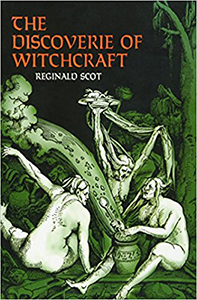Pseudomonarchia daemonum was a section in “De praestigiis daemonum”, a treatise on witchcraft written by Johann Wier, a Dutch physician and a pioneer of psychiatry, in 1583. Wier was a student of Cornelius Agrippa, a famous occultist and philosopher, and he based his catalog of 69 demons and their characteristics on Agrippa’s work and other sources. He also argued that most cases of witchcraft were actually illusions or mental illnesses and that the Roman Catholic Church was responsible for spreading the superstition.
The False Monarchy of Demons and Its Comparison with Ars Goetia
The name Pseudomonarchia Daemonum means “False Monarchy of Demons” in Latin, and it reflects the author’s intention to expose the fallacy of the belief in demons and their hierarchy. The book is similar to Ars Goetia, the first book of The Lesser Key of Solomon, a famous grimoire that contains 72 demons and their seals. However, Pseudomonarchia Daemonum predates Ars Goetia and it lists only 69 demons, some of whom have different names, ranks, or characteristics. (See comparison.) Moreover, Pseudomonarchia Daemonum does not provide any sigils or symbols for the demons, unlike Ars Goetia. Both books are based on older sources, such as the Liber officiorum spirituum (Book of the Offices of Spirits), a manuscript attributed to King Solomon.
Reginald Scot and His Translation of Pseudomonarchia Daemonum
Reginald Scot was an English gentleman and Member of Parliament, who translated Wier’s “Pseudomonarchia daemonum” into English and added it as an appendix to his book “The Discoverie of Witchcraft”, which he published in 1584. He also included some other demon lists from various sources, such as the Testament of Solomon and the Steganographia of Trithemius. He criticized some of the demons listed by Wier, saying that they were either invented or mistaken. In his book, he also wrote against the belief in witches and magic and aimed to prevent the unjust prosecution and execution of poor, elderly, and simple people, who were often accused of being witches. He exposed how some feats of magic were performed by charlatans and tricksters, making his book one of the first textbooks on conjuring.
Both Wier and Scot tried to challenge the prevailing views on witchcraft and demonology in their time by using their knowledge of medicine, law, theology, and history to support their arguments. They also faced opposition and criticism from some authorities and scholars, who defended the reality and danger of witchcraft.
Pseudomonarchia Daemonum Catalog of Demons
Modern Magick Demonology Sources »
[ Johann Wier | Collin de Plancy | Abramelin the Mage | The Goetia ]
You can read the Pseudomonarchia daemonum at Esoteric Archives.


